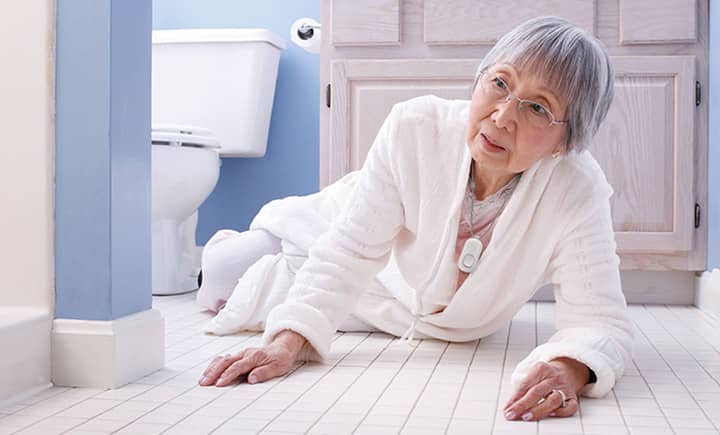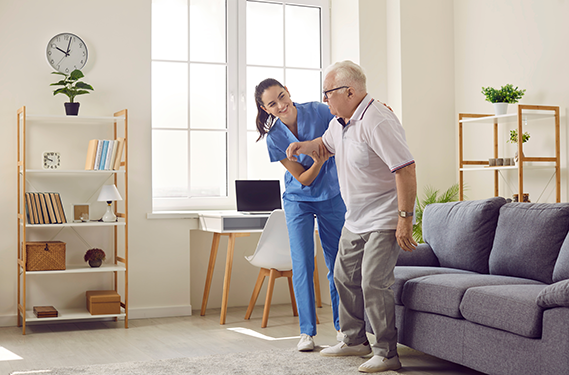As our loved ones age, the importance of maintaining their independence while ensuring their safety becomes paramount. The integration of fall detection technology into everyday life is a significant step toward achieving this balance. In this article, we will explore how fall detection systems can enhance independent living for seniors, providing peace of mind for both them and their families.

Understanding Fall Detection
Fall detection systems are designed to identify when a person has fallen and to automatically alert emergency contacts or medical services. These systems can be life-saving, especially for elderly individuals who live alone. Many modern fall detection devices use sensors and algorithms to distinguish between normal movements and falls, ensuring accuracy and reducing false alarms.
How Fall Detection Works
Most fall detection devices use accelerometers and gyroscopes to detect sudden changes in movement that indicate a fall. Some systems also incorporate machine learning techniques to improve detection accuracy over time. When a fall is detected, the system sends an alert to pre-set contacts or emergency services, enabling quick response and assistance.
The Role of Fall Detection in Independent Living
For many seniors, the fear of falling can lead to reduced activity and increased dependence on others. By incorporating fall detection technology into their lives, seniors can enjoy greater freedom without compromising their safety. These systems offer reassurance that help is always within reach, encouraging seniors to maintain an active and fulfilling lifestyle.
Benefits of Independent Living
Living independently provides seniors with a sense of autonomy and dignity. It allows them to continue engaging in activities they love and maintain social connections. With reliable fall detection systems, the risk of injury from falls is significantly reduced, making independent living a safer option for many seniors.
Choosing the Right Fall Detection System
There are various fall detection systems available on the market, each with unique features and capabilities. When selecting a system, it’s important to consider factors such as ease of use, reliability, and compatibility with other smart home devices. To learn more about privacy-friendly solutions, you can explore how technology is transforming elderly safety.
Key Features to Look For
Some important features to look for in a fall detection system include automatic alerts, GPS tracking, and battery life. Additionally, systems that integrate with smart home technology can provide added convenience and safety. For more insights into how smart technology is transforming daily life, visit our detailed article on IoT sensors.
The Future of Fall Detection Technology
As technology continues to advance, fall detection systems are becoming more sophisticated and accessible. Innovations such as wearable devices and smart home integrations are paving the way for more comprehensive solutions. These advancements not only enhance safety but also improve the overall quality of life for seniors and their families.
Emerging Trends
The development of artificial intelligence and machine learning is enabling fall detection systems to learn and adapt to individual users’ behaviors, further increasing their accuracy. Additionally, the integration of fall detection with other health monitoring devices is creating a holistic approach to senior care. For more information on smart elderly care solutions, check out our comprehensive guide.
Challenges and Limitations
Despite the benefits, there are challenges associated with fall detection systems. False alarms, privacy concerns, and the need for regular maintenance are some of the issues that users may encounter. Addressing these challenges requires ongoing research and development, as well as user education and support.
Tackling Privacy Concerns
Privacy is a major concern for many users of fall detection systems. Ensuring that data is securely stored and transmitted is essential to maintaining user trust. Solutions such as smart home fall detection offer privacy-friendly options that prioritize user data protection.
Conclusion
Fall detection technology is a vital tool in promoting independent living for seniors. By providing timely assistance in the event of a fall, these systems enable seniors to live confidently and independently. As technology continues to evolve, the potential for even greater improvements in fall detection and elder care solutions is immense.

FAQs
What is fall detection technology?
Fall detection technology refers to systems designed to detect when a person has fallen and to automatically alert emergency contacts or medical services.
How does fall detection benefit independent living?
By providing timely assistance in the event of a fall, fall detection systems reduce the risk of injury and allow seniors to live independently with peace of mind.
Are there privacy concerns with fall detection systems?
Yes, privacy is a concern. It’s important to choose systems that prioritize data security and offer privacy-friendly options, such as those available in privacy-friendly solutions.
This article contains affiliate links. We may earn a commission at no extra cost to you.






